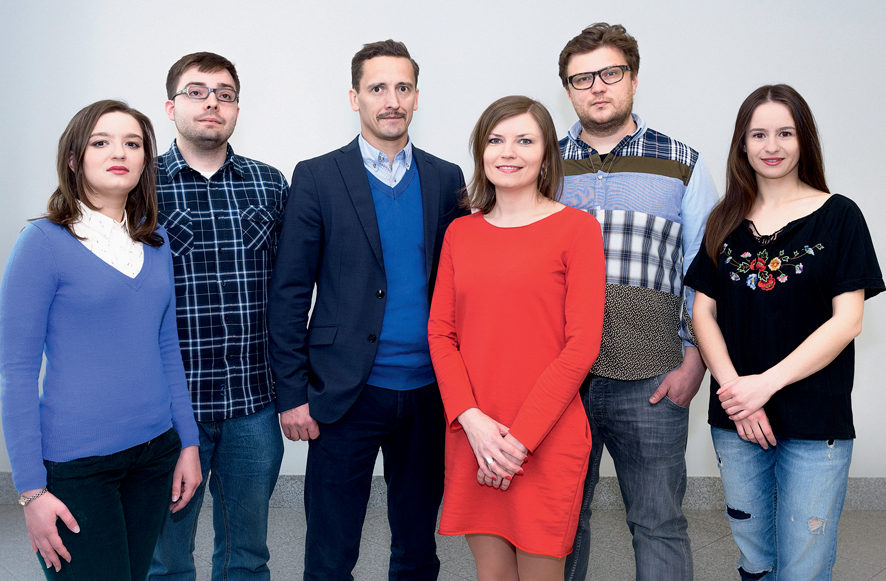- Head of laboratory
- Scientific Staff
- Technician and administration staff
- PhD Students
- Research profile
- Current research activities
- Selected publications
Head of laboratory

Research profile
The ability to recognize, remember and utilize the knowledge about the external environment is one of the most fascinating adaptive features in the animal kingdom. The development of such capability is fueled by evolutionary progress in the complexity of brain structure and function. This includes the emergence of specialized brain structures responsible for multiple aspects of spatial memory, and their ability to undergo plastic changes that allow for flexible adaptation to the changing elements of the environment. Spatial memory is necessary for independent functioning of humans, its defects lead to deep functional disability. In all mammals the central structure involved in spatial memory is the hippocampus. Certain cortical structures that connect directly or indirectly to hippocampus also participate in these processes. They gather information from other brain areas, filter and synchronize it. The interactions between brain structures responsible for spatial memory allow optimal selection of navigation strategy and provide balance between exploration of novel areas and the exploiting of already learned places. The importance of cortical structures in encoding and storage of spatial memory has been acknowledged only recently and its role has not yet been fully explained. It is therefore necessary to create an overall model that would describe the functioning of the entire system and explain how the interactions between different areas, layers or neuronal populations produce a coherent output that is manifested by successful behavior. Understanding of such complex system is possible with the use of animal models.
Current research activities
- Behavioral studies on the involvement of retrosplenial cortex in the process of encoding and retrieval of spatial memory
- Optogenetic investigation of functional relationship between activity of retrosplenial cortex and hippocampus
- Imaging and recording of neuronal circuits necessary for formation of specific memory trace in retrosplenial cortex.
Selected publications
Łukasiewicz K., Robacha M., Bożycki, Ł., Radwańska K., Czajkowski R. (2016) Simultaneous two-photon in vivo imaging of synaptic inputs and postsynaptic targets in the mouse retrosplenial cortex. J Vis Exp,13:109.
Czajkowski R., Balaji J., Wiltgen B., Rogerson T., Guzman Karlsson M., Barth A.L., Trachtenberg J.T., Silva A.J. (2014) Encoding and storage of spatial information in the retrosplenial cortex. Proc Natl Acad Sci, 111:8661-6.
Czajkowski R., Sugar J., Zhang S.J., Couey J.J., Ye J., Witter M.P. (2013) Superficially projecting principal neurons in layer V of medial entorhinal cortex in the rat receive excitatory retrosplenial input. J Neurosci, 33:15779-92.
Couey J.J., Witoelar A., Zhang S.J., Zheng K., Ye J., Dunn B., Czajkowski R., Moser M.B., Moser E.I., Roudi Y., Witter M.P. (2013) Recurrent inhibitory circuitry as a mechanism for grid formation. Nat Neurosci, 16:318-24.

